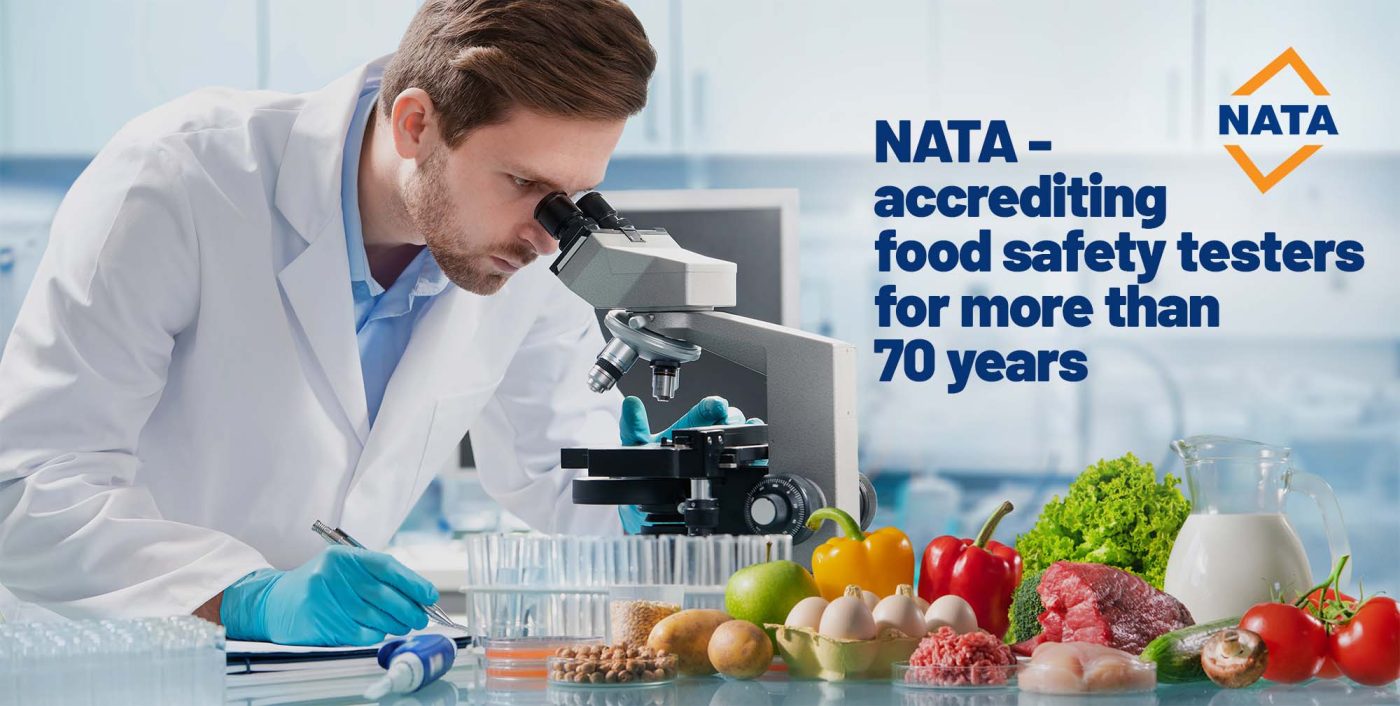Neil Shepherd, Sector Manager – Life Sciences, National Association of Testing Authorities
Celebrating 75 years
In 2022, the National Association of Testing Authorities (NATA) celebrates its 75th year of operation. NATA is Australia’s leading, internationally recognised accreditation authority and has a clear mandate to uphold the national standards of technical competence for those delivering a wide range products or services to Australians every day.
With more than 3000 accredited organisations across Australia – and growing in both number and industry type – NATA’s role of ‘testing the testers’ has been fundamental to the safety of all Australians.
From the food we eat, the water we drink, the cars we drive, and even the air we breathe, Australians rely on NATA even if they have never heard of the organisation!
The accreditation work NATA does in markets here and overseas, provides assurance and confidence to users as to the high quality and safety of their members’ goods, materials and services.
In the food space, NATA accredits testing facilities that undertake chemical and microbiological analysis of virtually all types of food. In addition to food safety and nutrition, NATA also accredits for the detection of contaminants and biosecurity hazards associated with food – both for import and export purposes.
The quiet achiever in food safety
It is no surprise food safety is high on NATA’s accreditation agenda.
As NATA prepares for the year-long celebration of its 75th year of operation, it is timely and indeed, relevant to highlight how NATA has been Australia’s hidden safety net – through its accredited laboratories – for what Australians eat every day.
Some key areas of NATA accreditation in food include:
- Allergen testing
- Biological safety testing on food
- Safety testing of imported foods
- Ensuring packaging does not taint food
- Monitoring chemical residues in grazing paddocks and feedstock
- Nutritional content of food
- Biosecurity testing for the protection our domestic crops and livestock
Early food testing
NATA commenced accreditation for the biological testing of foods in the 1950s. Testing at that time was primarily for the purpose of compliance with regulations, public health investigations and compliance with production specifications.
Important considerations certainly, but more was needed.
Since that time, NATA’s expertise in food accreditation has grown at an exponential rate. Expectations from consumers and an increasingly complex regulatory environment saw the breadth of accredited activities expand dramatically.
Allergen testing
As an example, in the early years of the 21st Century, NATA granted accreditation to laboratories for the detection of allergenic proteins in foods.
Significant input from NATA’s subject matter experts (SMEs) was needed to develop fit-for- purpose accreditation criteria in this area that accurately reflected the complexity of this testing. While NATA accreditation criteria continues to develop and lead the way in this area, their work with member laboratories continues to evolve.
NATA has since accredited many facilities for a range of allergens in food products and food product contact surfaces and actively participates in the activities of food allergen special interest groups. This ensures accreditation criteria in this area is clearly understood and meets stakeholder expectations.
Extending food accreditation services
More recently, NATA has been active in complex technologies for food testing. For example: PCR, MALDI-TOF, ICP and LC MS MS are now more common terms on NATA Scopes of Accreditation. This extended food testing gives NATA’s accredited members greater accuracy for results in low test level environments and rapid results from faster turnaround times.
High on the food safety agenda and another key area for NATA accreditation is the National Pesticide Residues Program, leveraging the established network of accredited chemical residue testing facilities.
Recent advances in DNA technology have allowed for the detection of exotic pests and diseases which pose a serious and ongoing threat to Australia’s agricultural sector and the food industry dependent on it. Through NATA accreditation, eDNA testing will allow detection of pest diseases in real time before embarkation and allow widespread pest and disease surveillance within Australia’s borders.
Other tangible benefits
NATA accredited food testing activities also support Australia’s multi-billion-dollar import/export markets. For example, by offering accreditation for microbiological testing of meat for export to the US and Europe.
For our member laboratories and ultimately Australian families, NATA-endorsed evidence for test results within the report delivers confidence the tests have been undertaken to the highest standards and by competent staff using sound science/engineering as verified by NATA’s peer assessment processes.
NATA encourages prospective food testing laboratories to seek accreditation so they can provide arguably the world’s best testing to their food clients. This in turn ensures their clients are providing food products of the highest quality giving them a clear market advantage and importantly, confidence and safety for the Australians that consume them.
